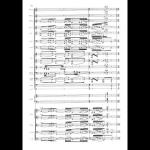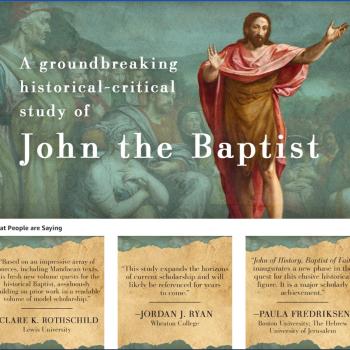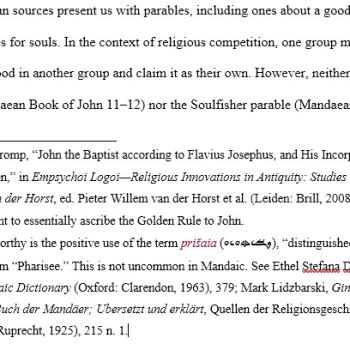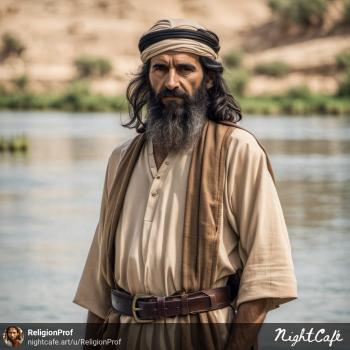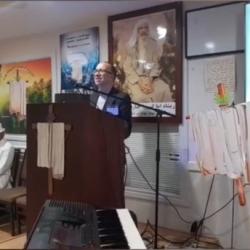At the weekly Friday coffee time at the Visiting Scholars Center at Oxford University’s Weston Library I had the opportunity to give a talk about the Mandaeans and the amazing collection of their manuscripts in the Bodleian Libraries, with some of those manuscripts on display, including not only the Book of John which I was involved in translating, but also Diwan Abatur which is an impressive illustrated scroll. They put lots of tables in a row to allow it to be unrolled and most of its impressive contents seen. Here is the video that was recorded of the talk. I hope you enjoy it and find it interesting! Leave a comment here and/or on YouTube to let me know what you thought was interesting and what questions you have if any.
The week before my own talk there was a presentation about Fairfax 16, a beautifully illustrated manuscript. The presentation used Exhibit, an online platform that allows you to create a virtual exhibit that incorporates digital facsimiles of manuscripts such as those in the Bodleian. I decided to make a stab at creating an online exhibit about the illustrated scrolls in the Bodleian’s Drower Collection. Here is what I have come up with thus far.
Let me include the text for those who may not be able to explore the exhibit:
Mandaean Illustrated Scrolls
An online exhibit of Mandaean scrolls in the Drower Collection in Oxford’s Bodleian Library.MS Drower 35 is called The Baptism of Hibil Ziwa. Hibil is the Mandaic form of the name Abel. Hibil Ziwa is thus “Abel-Radiance” and is the celestial counterpart to the earthly figurer. Hibil is a major character in the religious stories of Mandaeism.
MS Drower 41 (R), The Great First World, is a priestly commentary on the major liturgical prayers used in Mandaean baptismal ceremonies. Baptism for Mandaeans is not a one-time action but done repeatedly, especially at major festivals and holidays, as a way of seeking forgiveness of sins and purification in preparation for the afterlife.
MS Drower 8 is the Diwan (Scroll) of Abatur. Abatur is a celestial being who stands above the purgatories through which souls ascend seeking to reach the lightworld above. He weighs and judges those souls. The illustrations in the book depict torments in the purgatories or waystations through which the soul passes, including a scene in which they are tormented with loud sounds generated by trumpets and cymbals.
MS Drower 6 (R) is a work known as the Thousand and Twelve Questions. While lacking in illustrations and thus visually less striking, its esoteric contents for priests provide important clues to Mandaean history. One important example is the comparison made between a person who moves from the status of layperson (Mandaean) to priest (Tarmida) and a person who moves from Judaism to Mandaeism. This indicates that at one point the socioreligious context in which Mandaeism existed was a Jewish one.
In addition to scrolls, there are also important Mandaean texts in book form. These include the two most sacred scriptures, the Ginza Rba (Great Treasure) and the Book of John, as well as collections of liturgical prayers.
I hope you will learn more about the Mandaeans through the many books, websites, and even YouTube videos that will allow you to see their baptismal ritual.
Check out the Oxford Medieval Studies YouTube channel (and also their blog and Twitter presence) for more of this kind of content. As you can tell from my talk about the Mandaeans and their manuscripts, they do not exclusively support work on the Middle Ages in Europe but the study of the past in both earlier and later periods and in different places as well.


